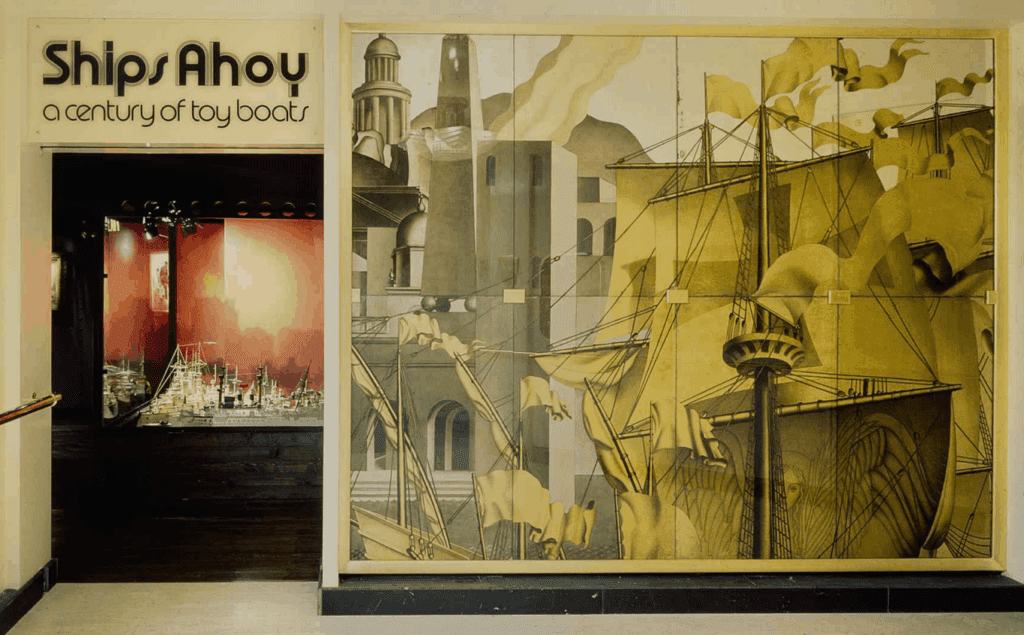Last updated: October 11, 2023
I have collected here all the information from the Sotheby’s auction catalog for the Forbes Normandie Panels auction on June 6th, 2017. Including the text, articles, images, etc.
The Auction Catalogue
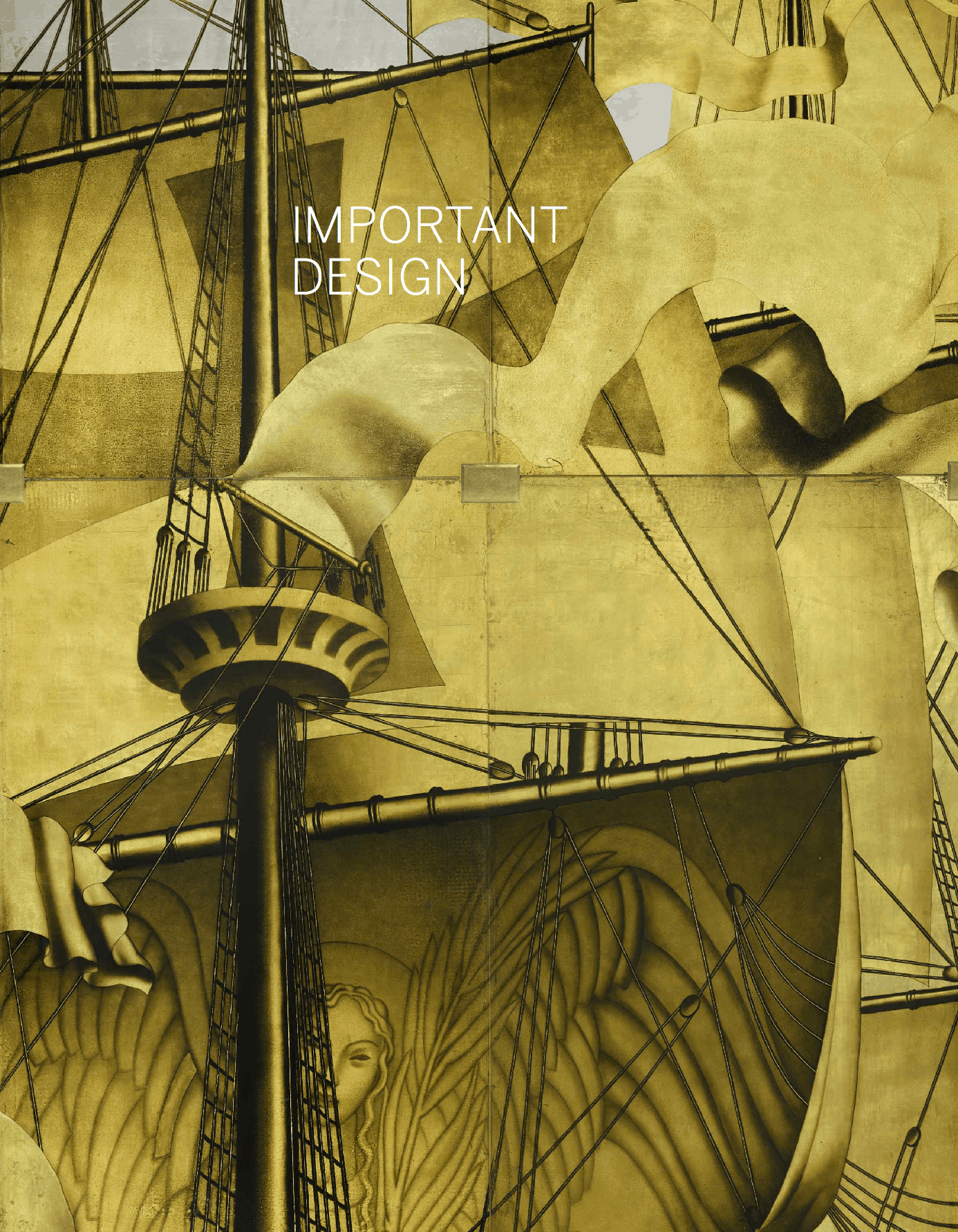
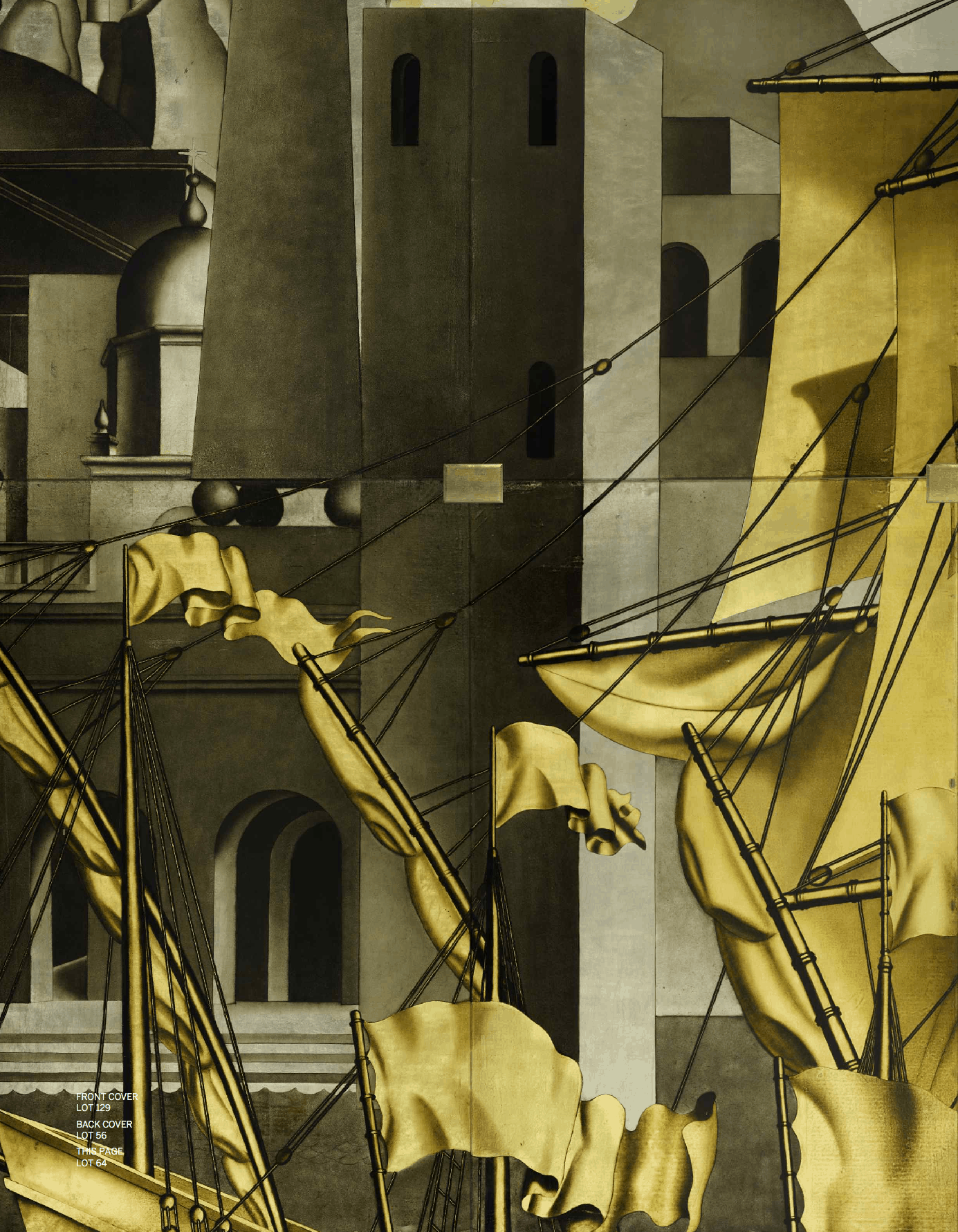
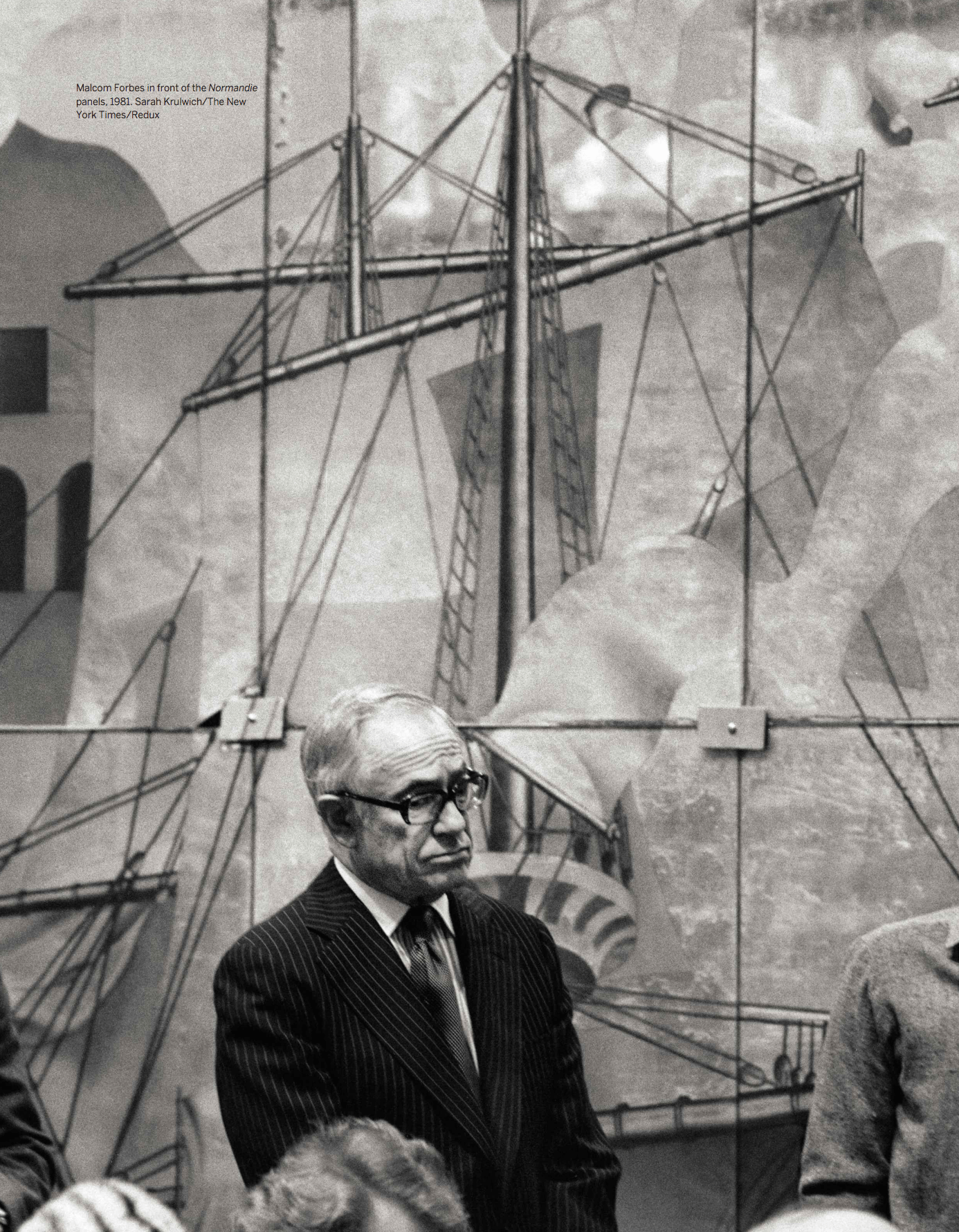
Thoughts On Malcolm Forbes and The Normandie Panels
By Robert L. Forbes, originally published in the Sotheby’s Auction Catalogue PDF on their website
My dad was always fascinated by ocean liners, having as a young lad traveled back and forth to Scotland on the RMS Aquitania with his family for many years. His father, B.C. Forbes, had immigrated to America at the turn of the century and had eventually become the top business journalist in the U.S. In 1917, he launched Forbes Magazine which turned out to be a major success. Now a man of means and stature, B.C. liked returning with his five boys to the old country to visit his extremely modest roots.
Those voyages had great impact on my dad who formed a love of ships and the sea that lasted a lifetime. He purchased or had built for him numerous yachts he named The Highlander, in a nod to his origins. Because he liked the style of naval architect Jon Banenberg’s radical lines and very comfortable interiors, the last Highlander, at 151 feet, was a spectacular boat of strikingly modern design. In fact, a few single panels from the Normandie graced her walls.
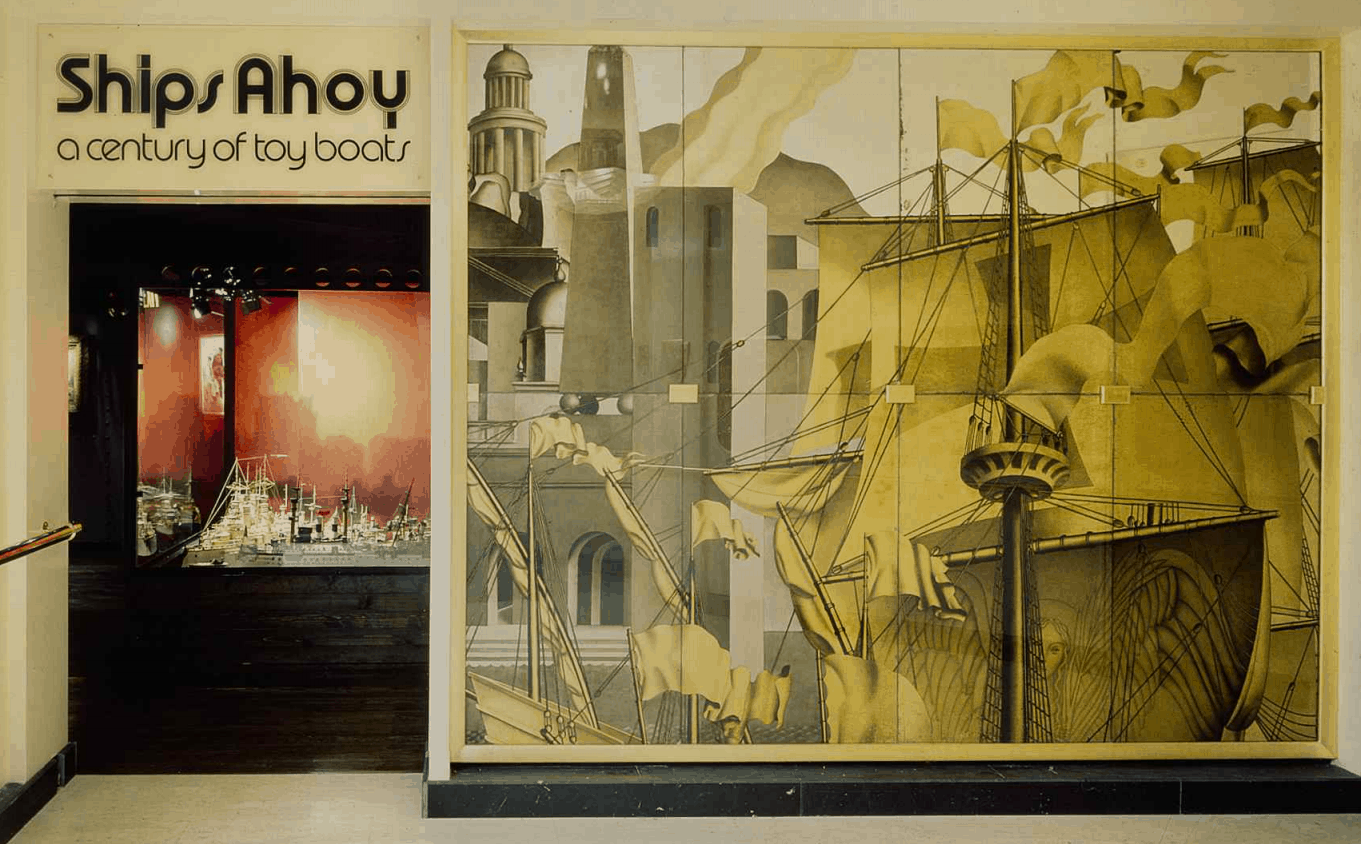
Dad also bought ship models that decorated the Lodge of his vast ranch in the Colorado Rockies because he liked the disparity of ocean-going vessels being docked and displayed at 6,000 feet. As well, he and I put together a premier collection of Toy Boats that were on view in The Forbes Galleries at our offices at 60 Fifth Avenue in New York for almost 30 years. When in 1981, a full and stunning set of panels from the main salon of the Normandie came to the auction rooms of Sotheby’s, he knew he had to have them, but he knew as well that there was great interest in them and so he’d need to be at the sale to be sure he took home the prize.
There was only one hitch: the day of the afternoon sale was also the day of my marriage, March 21, 1981. But he was not without determination and aplomb. He simply said to me that he had to be away for some of the festivities but would rejoin us shortly. Though a bit surprised, I had enough on my mind. I had a ceremony to deal with and the reception to attend – with my bride!
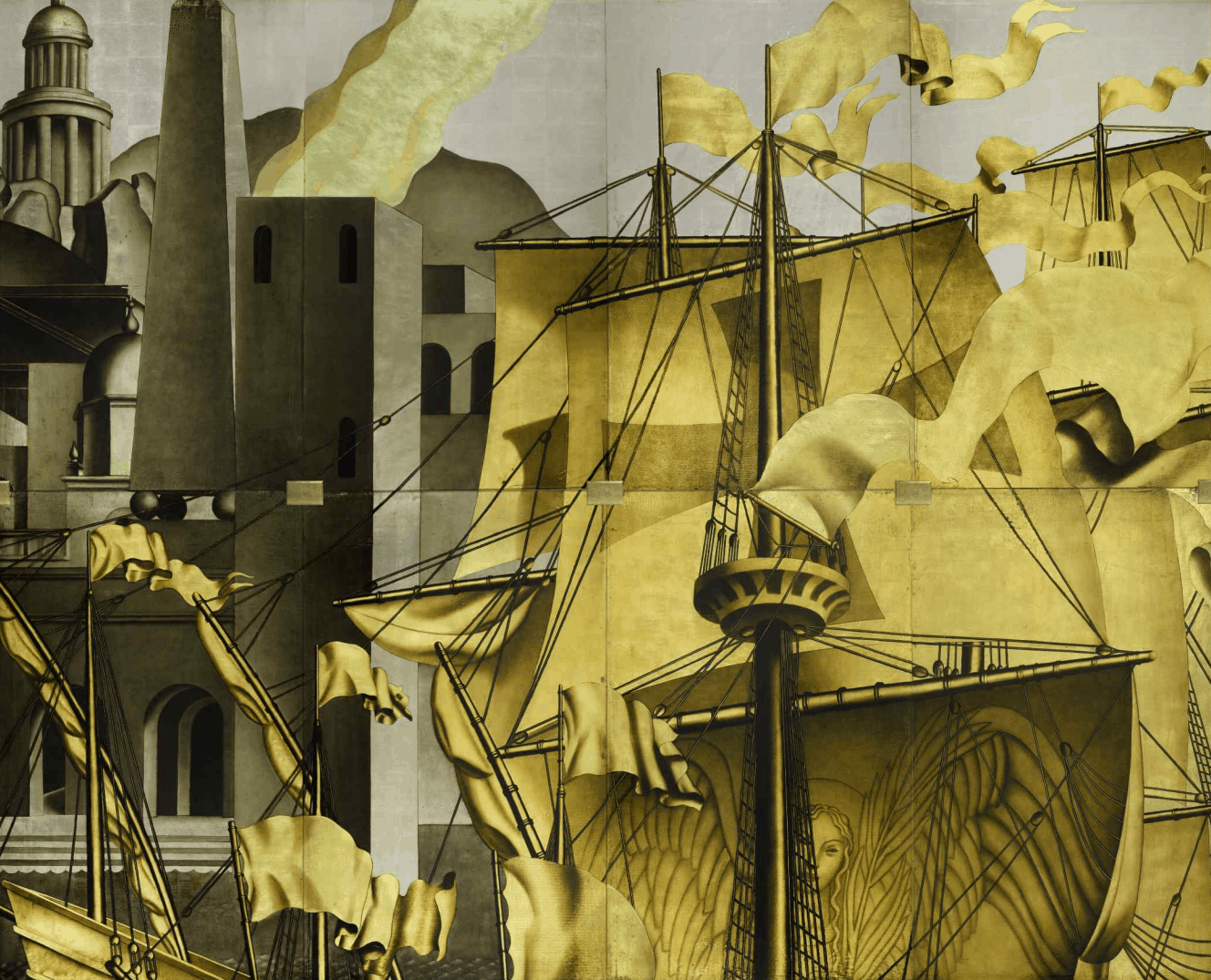
When he did show up at the reception he had Rita Reif in tow, who wrote about auction sales and antiques in The New York Times. I knew right away where he’d been, and sure enough, he announced that he’d just bought the Normandie Panels for me as a wedding present! They were not intended for my apartment though. They would instead be on display at 60 Fifth Avenue as the entrance for the exhibition of the Toy Boat Galleries. “Well, ok,” I said, teasing him, “I’m good at sharing, so that will be fine.” And it was, to the delight of the many thousands of visitors over those many years. Now the time has come for them to embark on a new adventure, and I hope the new owners will be as enchanted by them as we have been.
The S.S. Normandie A Brief History
By Bill Miller, originally published in the Sotheby’s Auction Catalogue PDF on their website
The Normandie was the ultimate trans-Atlantic ocean liner—assuredly of the 1930s, and perhaps of the entire 20th Century. She was also a ship of abundance—she was novel, innovative, glittering, exceptionally advanced, truly sensational. She was, of course, the result of a successive series of always bigger and better French liners, beginning with the France of 1912 and continuing to the Ile de France (1927) and L’Atlantique (1931). Even the far smaller Champlain (1932) has often been called a prelude. Her design also drew from existing big Atlantic liners, ships such as the Bremen, Europa, Empress of Britain, Rex and Conte di Savoia. Her French creators, designers and decorators sought perfection and then, or so it would seem, went one step or even two steps further.
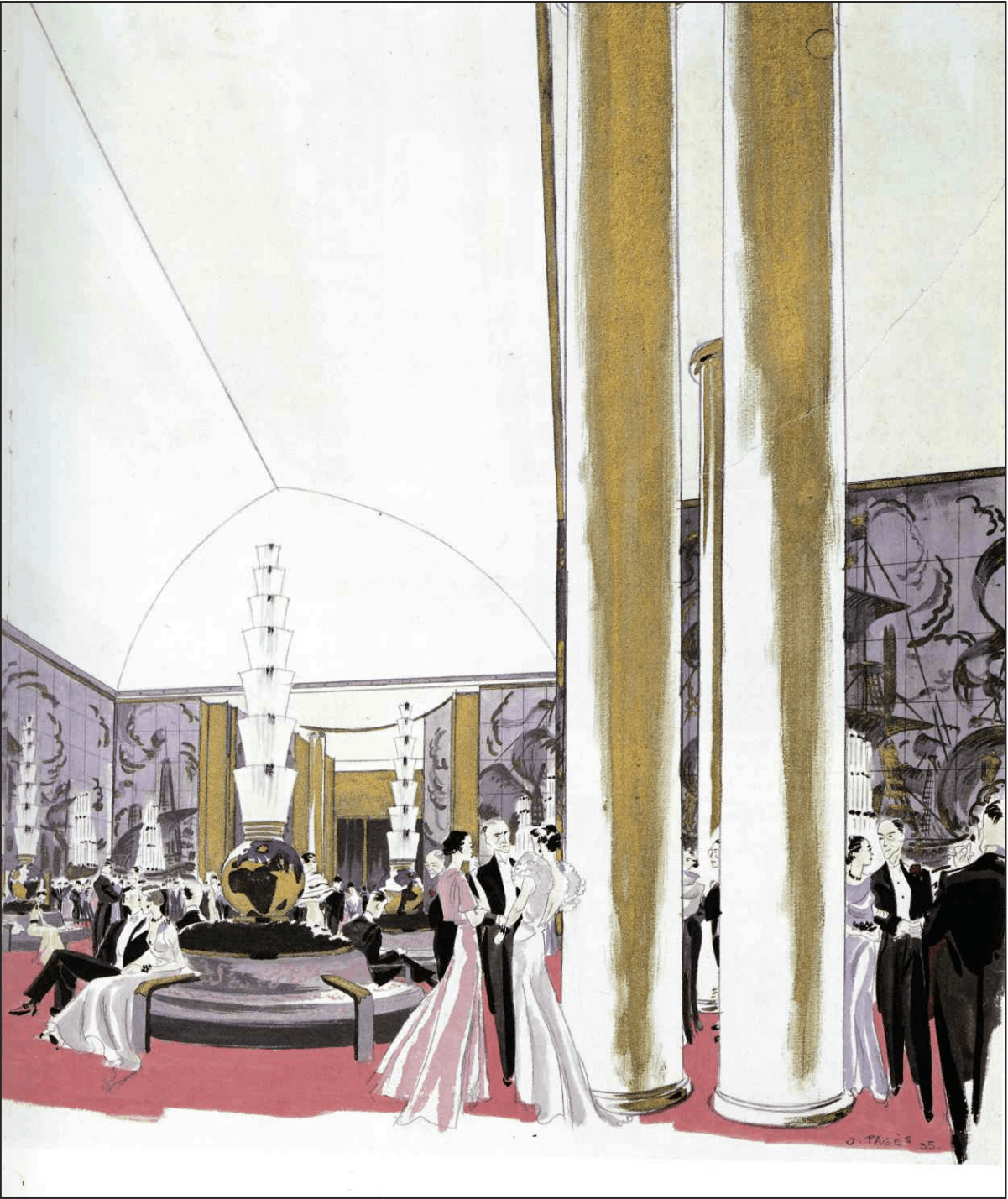
Her purpose was distinctly threefold: to be the largest, fastest, and most luxurious liner ever built. Indeed, the Normandie was an extraordinary floating center of “everything French”, from food to decor to style and fashion. In buoyant foresight, her Parisian benefactors and owners realized that such an incredible feat of engineering, design, and artistry would become a modern symbol of French ingenuity and opulence. The French government was very enthusiastic and subsidized much of the $60 million construction cost, itself then the greatest amount paid for a passenger liner. The Normandie succeeded in all three intentions and left a long-lasting legacy that had an extraordinary and far-reaching impact on decoration, dining, films and even children’s toys, becoming without question the most important and certainly the greatest and grandest of all French liners.
The Normandie entered service in the spring of 1935 with great success, celebrated with gala receptions and with the further triumph of winning the prized Blue Riband for speed. With a record of 29.98 knots, translating to an impressively fast 3 ½ day journey between New York and Le Havre, she beat out the previous winner, Italy’s Rex and her speed of 28.92 knots.
The interested public, especially in New York, marveled at her very contemporary, even advanced, raked silhouette of three funnels, each diminished height moving aft. Her outdoor decks were meticulously cleared—there was not a ventilator, deckhouse or chain locker out of place. Everything was thoughtfully hidden below. The bow was finely raked. But if her exterior appearance was striking, the interiors were the true masterpiece.
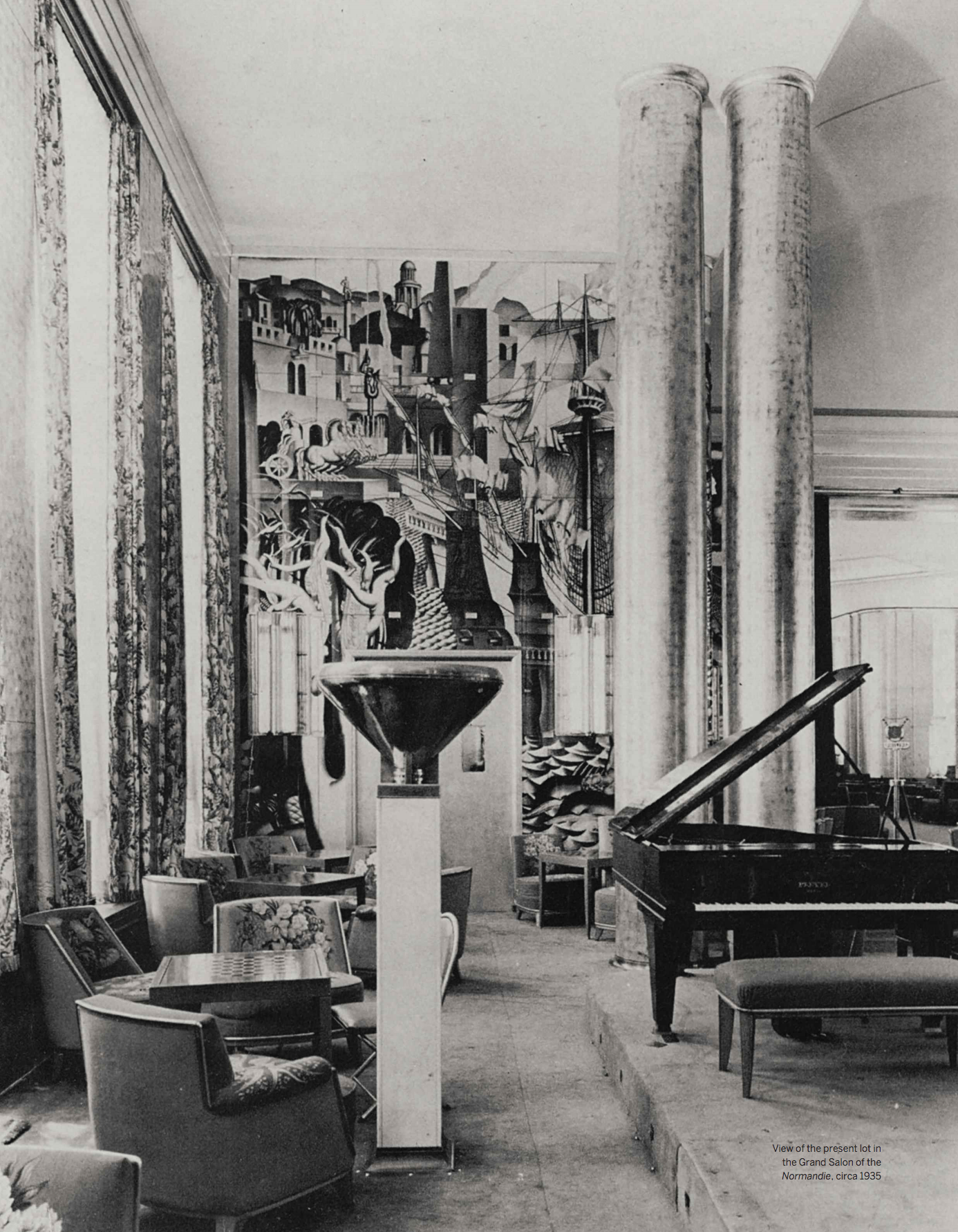
Carrying 1,972 passengers (848 in fist class, 670 in tourist and 454 in third), the Normandie was certainly the most extravagantly decorated liner of her day, perhaps of all time. It garnered an overwhelming amount of media attention leading up to its inaugural voyage and later overachieved in seducing its passengers such as Salvador Dalí, Cary Grant and Marlene Dietrich with its spectacular interiors. The main dining room, for example, was decorated with hammered glass, bronze and works by René Lalique and was slightly longer than the Hall of Mirrors at Versailles. It rose three decks in height. The theater was the first ever fitted to a liner and included a complete stage. The indoor pool was 80 feet of tiled, graduating levels.
The Winter Garden included exotic birds in cages, sprays of water and live greenery, and altogether creating an almost tropical jungle retreat. Each first class cabin was done in totally different decor, resulting in 400 different concepts and themes altogether. Two deluxe apartments, located on the Sun Deck, headed the fist class section. Each had four bedrooms, a private terrace, attached servants’ quarters and a private dining salon with an individual serving area and warming kitchen. The main salon featured the largest Aubusson carpet afloat and was decorated with glass panels by Jean-Théodore Dupas.
Long revered as the holy grail for Art Deco and ocean liner collectors alike, the Dupas panels were the highlight of the Normandie’s exceptional decor. They not only spoke of Art Deco—they yelled it out! Quite simply, they were sumptuous, rich and luxurious.
The son of a sea captain and himself a short-term seaman, Bordeaux-native Jean-Thèodore Dupas turned to art in a subsequent career that brought him fame and notation. He was invited to create a huge mural for the Normandie’s luxurious Grand Salon. When asked by the French Line for a composition extolling the delights of Normandy, he chose an allegorical theme of The History of Navigation instead, which would become one of its most accomplished masterpieces.
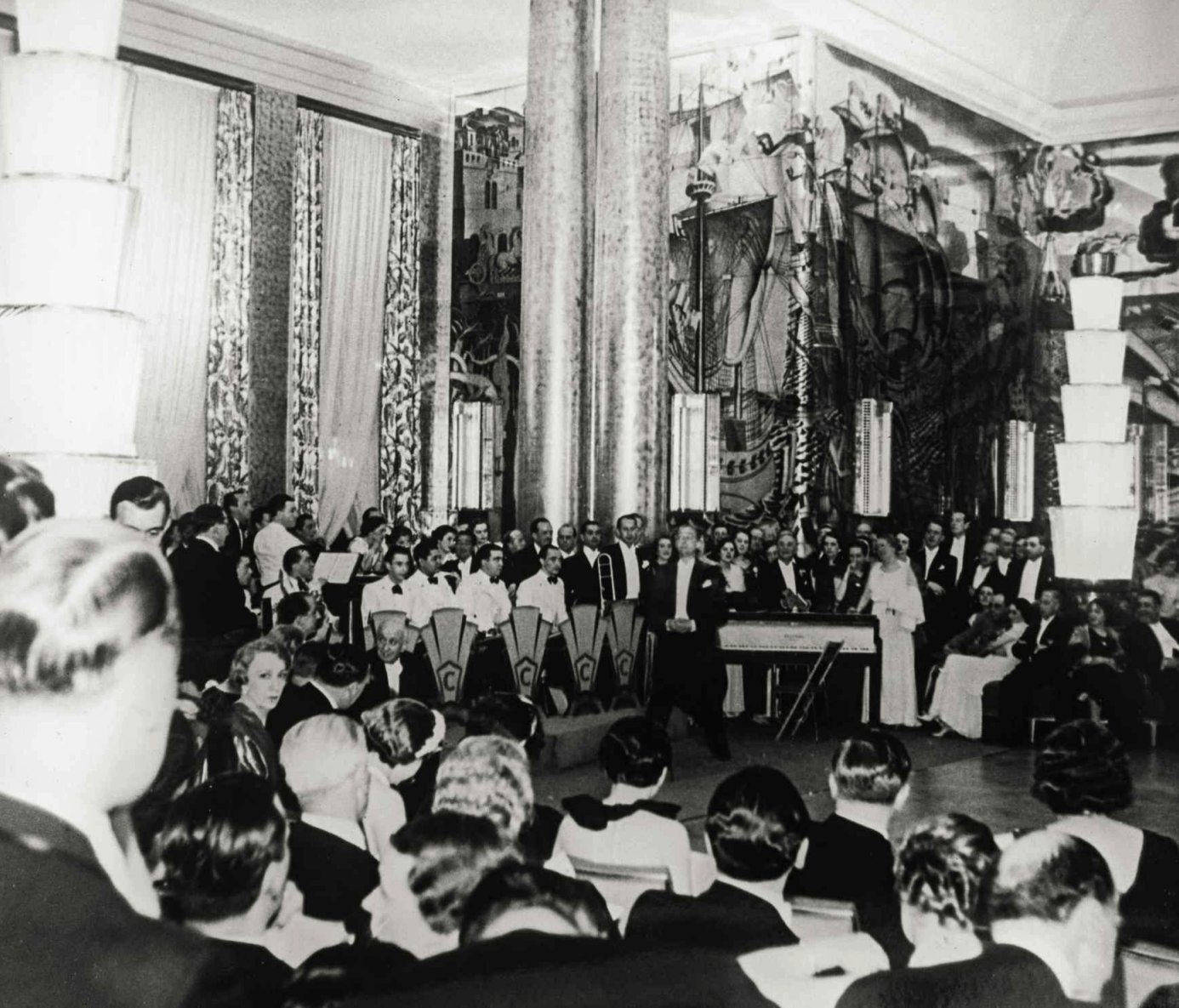
The Normandie’s Grand Salon was distinguished by its soaring 32-foot high ceilings and cruciform layout. The walls were broken up by five tall windows on each side and a set of sliding doors opening to the adjoining Smoking Room. As a result, Dupas was obliged to create a composition that would accommodate the complex architecture of the space. He did so by dividing the mural into four separate, right-angled segments which he conceived as a series of four thematic murals, offering a continuous glittering scene that blended classical mythology with maritime history. The four scenes—The Birth of Aphrodite, The Chariot of Poseidon, The Chariot of Thetis, and the Rape of Europa—presented an eclectic fleet with Egyptian dhows, Chinese junks, 18th Century man of wars, and 19th Century paddle steamers. Dupas’ figures came from Greek and Roman mythology: sea serpents and dolphins and dramatic human figures, with mannerist long necks and flowing hair.
Adding to the uniqueness of his work, Dupas created his images not on canvas but on glass panels, which were later assembled as a giant, glorious, and imposing mosaic. The process was specially named verre églomisé, a term derived from the work of 18th Century ébéniste JeanBaptiste Glomy who had perfected this technique for decorating picture frames. The process was time-consuming, laborious, and complex, requiring that highlights be applied prior to the layering of black paint. Dupas was invaluably assisted by specialist Charles Champigneulle, who enriched the artist’s outlines with layers of black, gold, silver and platinum washes. The result was heroic in scale and gloriously luminescent. Each mural was a mosaic, assembled from a hundred panels anchored by bronze brackets at their corners and covering four hundred square meters. When the lights of the Grand Salon were illuminated, the golden surfaces of the murals glowed uncannily, as if releasing imprisoned sunlight. “The larger my work, the happier I am” declared Dupas, stating that the panels had been conceived “with the desire to create an abundant, splendid effect,” referencing Versailles’ Galerie des Glaces and competing with the richest gallery in the richest of all palaces.
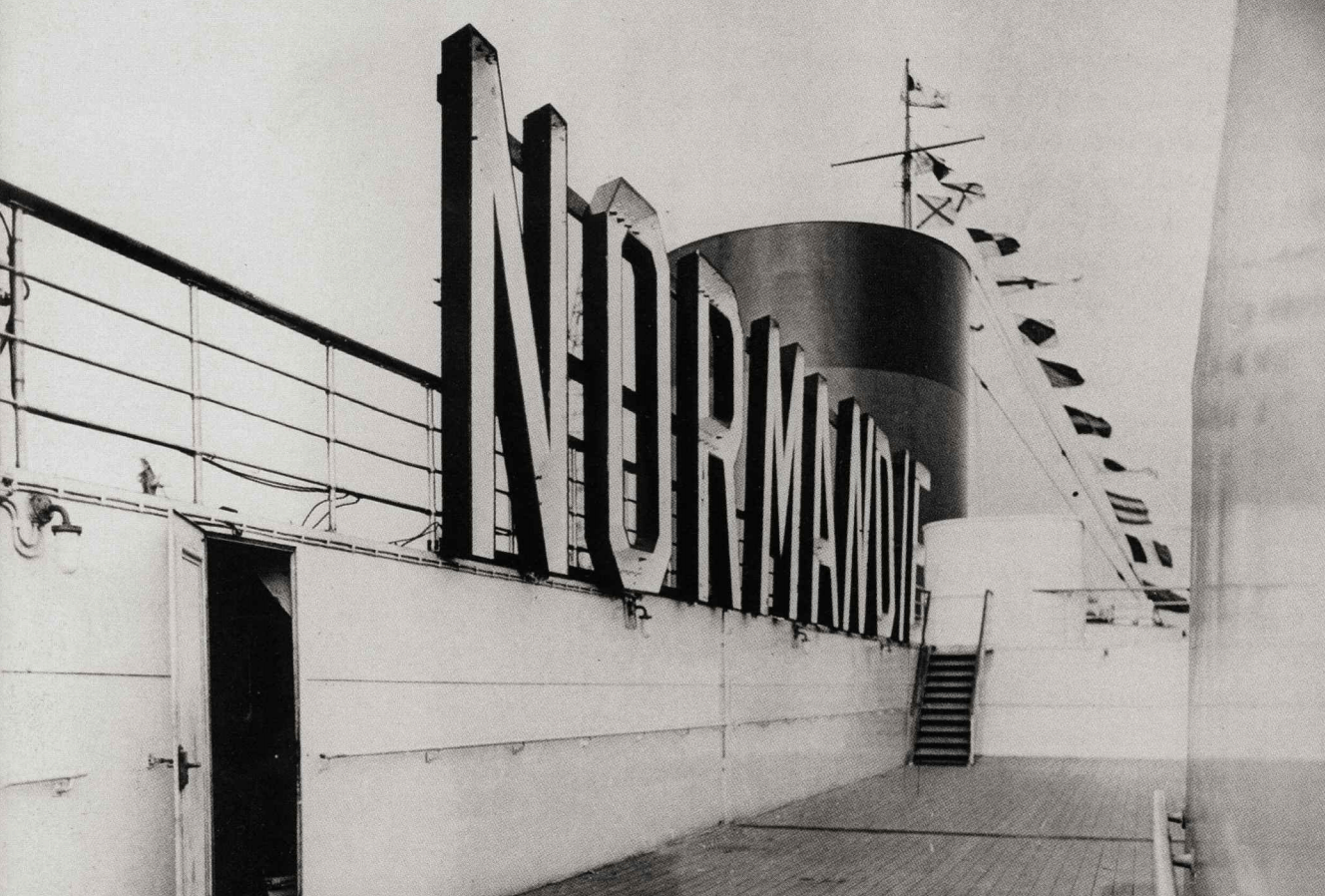
Dupas’ compositions combine antique figures, medieval architectures and baroque sailing ships, in a glittering dream which evokes a golden age. As written in Bruno Foucart’s Normandie, Queen of the Sea, “These great golden panels have about them a joyousness, a humor and a sophistication that now seem the very embodiment of the 1930s, a between-the-war world that, in the middle of the ocean, could appear like an interlude between pleasures.”
The Normandie’s last crossing took place in August 1939, months before the fall of France to the Nazis that would prevent her return from New York to Le Havre. After Pearl Harbor, the United States commandeered the ship for naval use and starting in December 1941 the decorations were stripped away. In February 1942, an accidental fire burned the ship and the tons of water used against the blaze caused the ship to capsize. Its hull was later salvaged and sold for scrap in 1946.
The composite form of Dupas’ murals was, in a sense, its salvation in that the completed work could not only be removed from the ship before its fatal fire but could also be dispersed in small groupings. In 1976, the main part of the Chariot of Poseidon mural was donated to New York’s Metropolitan Museum of Art, preserving for posterity an entire corner of Normandie’s Grand Salon. In 1981, one of the largest assemblages of continuous panels known was acquired at auction by Malcolm Forbes as a surprise wedding present for his son. The panels were subsequently the centerpiece of the main entry of the Forbes Magazine Galleries, within the historic Forbes Building in Manhattan.
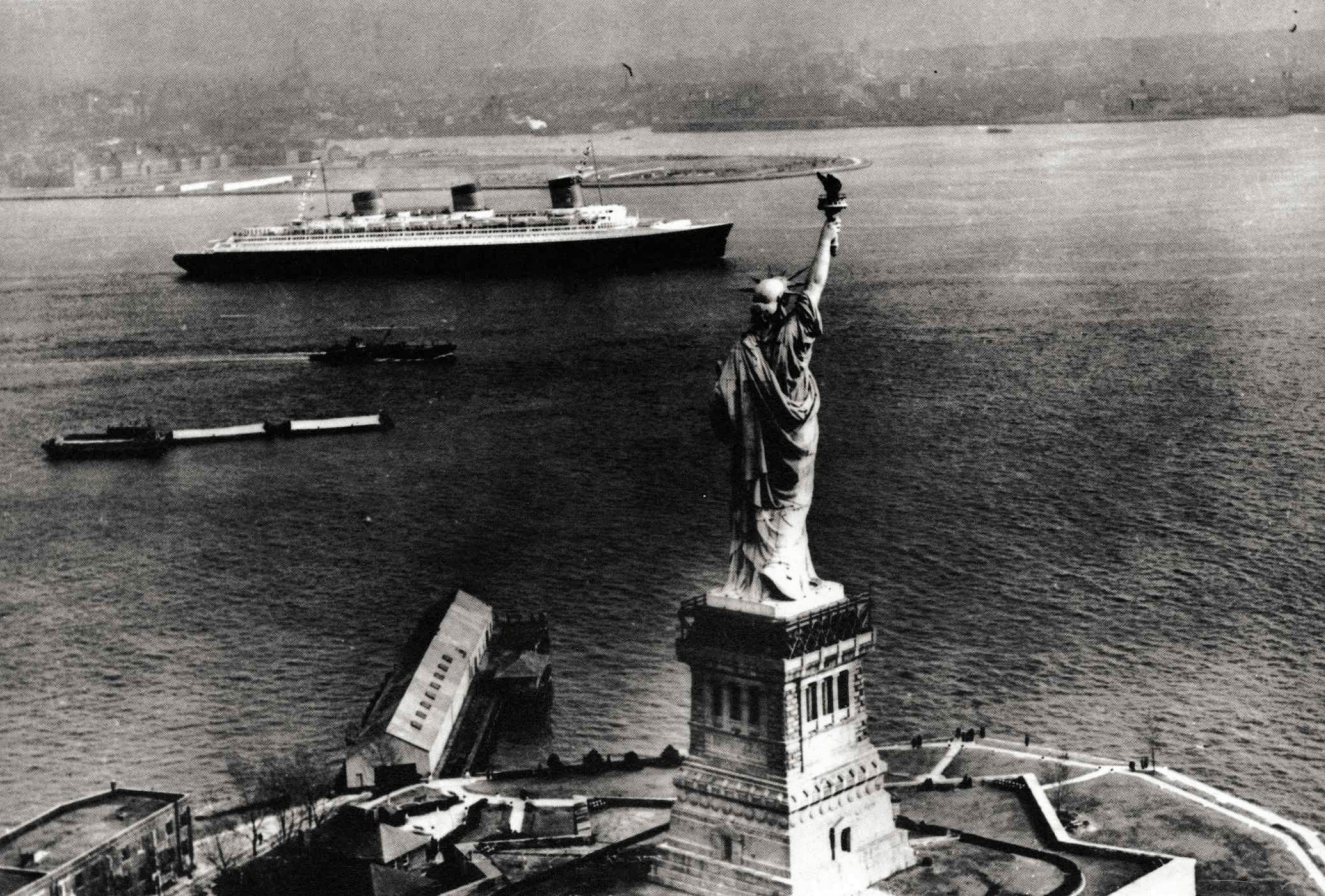
Originally installed in the proper right top of the Birth of Aphrodite, these eight continuous panels depict classic architectural elements which are reminiscent of De Chirico’s enigmatic arches and towers and contrast wonderfully with the rhythm of the tangled sails, filled by the wind. The mysterious angel brings a reassuring sense of calm to Dupas’ chaotic storm. We can speculate that perhaps she personifies the zephyr which pushed Aphrodite to shore and protected the passengers of the Normandie. This offering presents collectors with a rare and unprecedented opportunity to acquire one of the largest assemblages of Normandie panels ever to appear on the market from a legendary American collection.
— Bill Miller, known widely as “Mr. Ocean Liner,” is the author of over 100 books on passenger ships, a frequent guest speaker on modern-day cruise liners and was curator of Decodence: The Art & Style of the Normandie at New York City’s South Street Seaport.
Video of Auction
Here’s a video that I filmed on my cell phone of the Forbes Normadie Panels auction, live from the Sotheby’s room. It sold for $1,392,500 as the hammer price with the buyer’s premium.
Pictures of Forbes Panels at Sotheby’s

The Forbes Normandie Panels
Eight Panels from “The Birth of Aphrodite” Mural from the Grand Salon of the S.S. Normandie
circa 1934
executed by Charles Champigneulle, France
verre églomisé
98½ x 121⅝ in. (250.2 x 308.9 cm)
Provenance
Christie’s New York, March 21, 1981, lot 359
Collection of Malcolm Forbes, New York
Thence by descent to the present owner
Exhibited
Forbes Galleries, New York, 1985-2014
Literature
Walter Rendell Storey, “French Decorative Ideas: In Their Latest Creations the Contemporary Designers of Paris Reveal the Development and the Variety of Their Technique,” The New York Times, June 16, 1935 (for a description of the interior design innovations of the Normandie)
Magdeleine Dayot, “L’Art à bord de Normandie,” L’Art et les artistes, June 1935, pp. 340 (for an interior view of the Grand Salon showing “The Birth of Aphrodite” mural) and 341 (for a detail from the mural)
Louis Cheronnet, “Normandie,” Art et Décoration, July 1935, p. 253 Yvanhoé Rambosson, “Le Paquebot Normandie, Héraut de France,”
Yvanhoé Rambosson, “Le Paquebot Normandie, Héraut de France,” Mobilier et Décoration, July 1935, p. 268 Lee Creelman, “Normandie,” Vogue, August 1935 (for a description of life aboard the Normandie)
Lee Creelman, “Normandie,” Vogue, August 1935 (for a description of life aboard the Normandie)
Martin Battersby, The Decorative Thirties, New York, 1971, pp. 26-27
Alain Lesieutre, The Spirit and Splendor of Art Deco, New York, 1974, p. 27
Rita Reif, “The Saga of the Normandie Panels,” The New York Times, October 19, 1980 (for the history of the Normandie panels)
Pierre Kjellberg, Art Déco: Les Maîtres du Mobilier, Paris, 1981, pp. 263 and 266 (for a discussion of Jean Dupas’ design for the Grand Salon)
Rita Reif, “Forbes Buys Salon Panels of Normandie for $90,000,” New York Times.
March 22, 1981 (for an account of Malcolm Forbes’ acquisition of the present lot with a photograph of Malcolm Forbes in front of the panels)
Helen-Louise Seggerman, “The Unsinkable Malcolm Forbes,” Art & Auction, May 1981, pp. 56-57 (for an account of Malcolm Forbes’ acquisition of the present lot and an illustration of the present lot)
Russel J. Fornwalt, “Forbes Wins Check,” The Antique Trader Weekly, August 12, 1981 (for an account of Malcolm Forbes’ acquisition of the present lot)
Rita Reif, “Auctions; When Forbes goes bidding,” New York Times, June 15, 1984 (for a description of Malcolm Forbes’ collecting, including his acquisition of the present lot)
“Normandie’s Sun Rises Again,” Connoisseur, October 1984, p. 118
Bruno Foucart, et al., Normandie: Queen of the Seas, New York, 1985, pp. 70-71 and 72 (for Dupas’ cartoons for the Normandie murals)
Margaret Kelly, Highlights from the Forbes Magazine Galleries, New York, 1985, pp. 66-79 (for the present lot illustrated and a description of Forbes’ toy boat collection and exhibition at Forbes Magazine Galleries, New York)
Rita Reif, “Antiques; Images of Ship’s Proud Past,” New York Times, August 18, 1985 (for a reference to the present lot) Malcolm Forbes, More than I Dreamed, A Lifetime of Collecting, New York, 1989, p. 209 (for the present lot illustrated in the Forbes Galleries)
Jean-Paul Bouillon, Art Deco 1903 1940, New York, 1989, p. 235
Louis-René Vian, Arts Décoratifs À Bord des Paquebots Français 1880-1960, Paris, 1992, pp. 192-194 and 195 (for the present lot illustrated in the Forbes collection and in the Grand Salon)
Frédéric Ollivier, Normandie, un chef d’oeuvre français, Douarnenez, 2005, p. 92 (for the present lot partially illustrated)
John Maxtone-Graham, Normandie: France’s Legendary Art Deco Oceanliner, New York, 2007, pp. 92-93 (for an interior view of the Grand Salon and a discussion of the verre eglomisé technique) and 206.
More Normandie Panels Info
-
- Normandie Panels by Jean Dupas: History, Collectors, and Lore
- Recent Normandie News
- Check out my article and update about the missing Forbes Galleries

